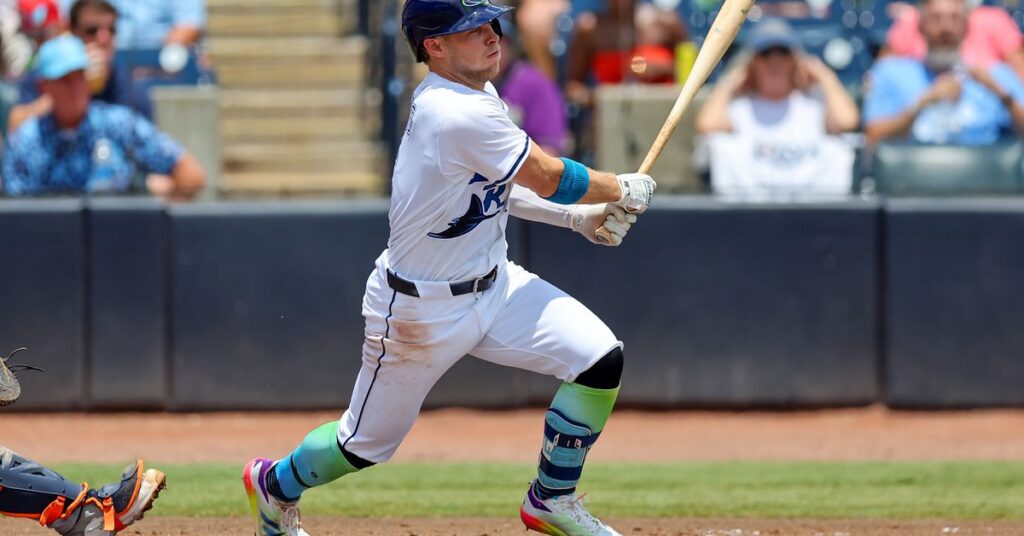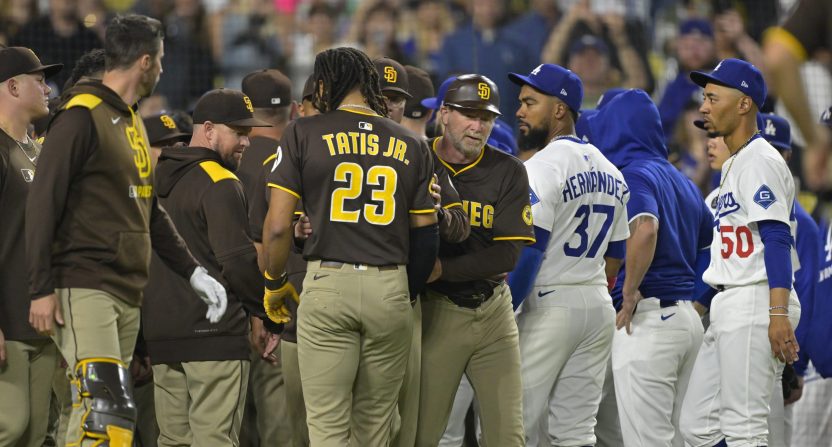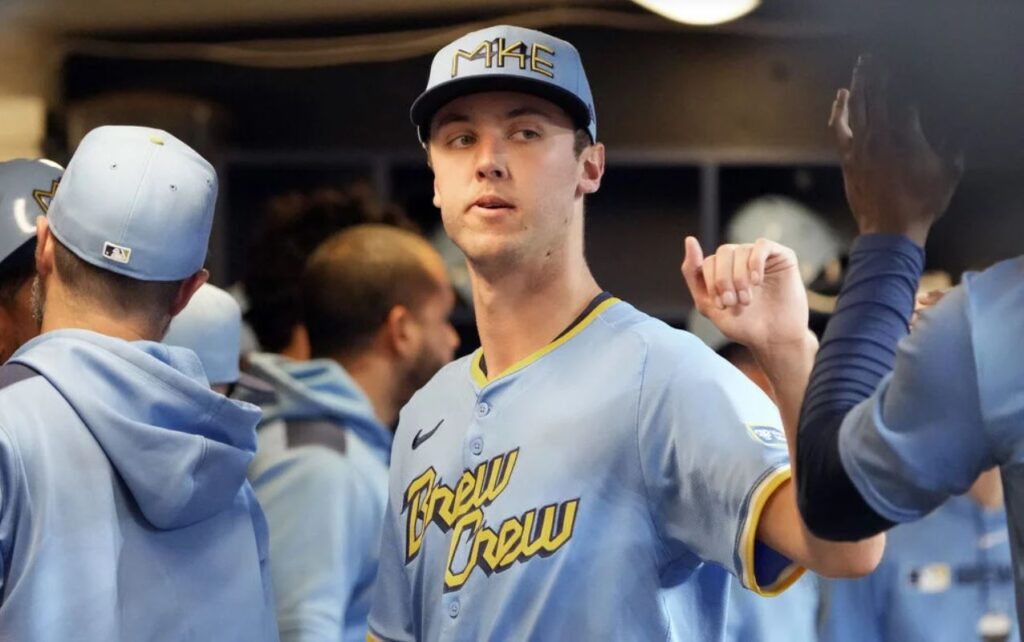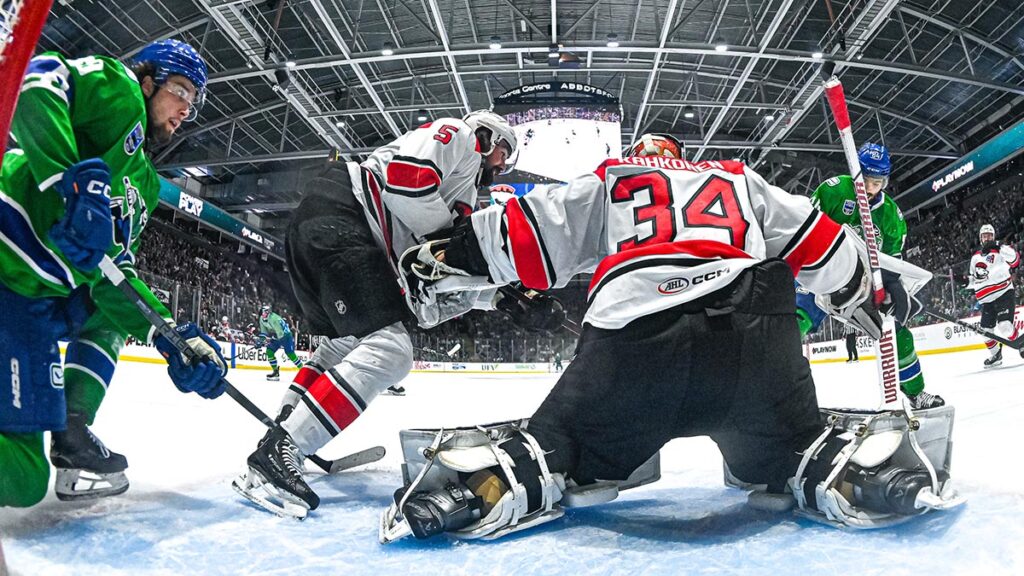On its overseas trip, Oklahoma men’s basketball did the usual overseas trip things. The Barcelona portion included a visit to the preposterously gorgeous La Sagrada Familia, a stop by the Olympic Stadium for some Dream Team reminiscing, a tour of FC Barcelona’s massive home at Camp Nou and some beach time. There was a Normandy excursion while the Sooners were in Paris. The three basketball games were cool, too, if not aesthetically comparable for social media channels.
A great time, Porter Moser declares, a couple weeks after returning to home soil. An unbelievable trip.
“What I liked the most,” Oklahoma’s coach says in conclusion, “was I loved practice.”
It is a very college basketball coach thing to say — or at least a moment of peak Porter Moser — to celebrate the bonus four hours of workout time afforded programs as they prepare for their European tours. But it’s understandable. The result of Moser, at last, making the jump to a power conference job, after leading Loyola Chicago from obscurity to national visibility, was 19 Sooner wins and a No. 30 spot in the final KenPom.com rankings. It was a fine debut in 2021-22. But it was not perfect, and not entirely close. And to know Moser is to know he is not fond of even the tiniest imperfection.
This season, a solid stable of returnees is joined by proven transfers and a pair of four-star freshmen, which is not a bad place to start. The results from the overseas trip have the head coach optimistic. And, nevertheless, there’s so much to do, Moser hardly knows where to start. “There’s nothing that I could point to that I’m not obsessed with getting better at,” he says. “Like, I think that’s how you do it. We’re in Year 2, and I want to be way better defensively. I want to be way better offensively. I want to be stronger. I want to be better in situations. I want to have better togetherness. I want to be better shooting. We’re talking to our guys about that — it’s got to be constant and never-ending improvement. It’s got to be nonstop.”
What were the key things that you definitely established in Year 1 — the building blocks that you didn’t have to reteach or rehash?
Defensively, I think this league is so elite. You’ve got to guard in this league. You can’t be a team that’s like 200th in defense. I think we established the idea of guarding possession by possession.
This year, having Jalen Hill, Jacob Groves, Tanner Groves, C.J. Noland — we have five guys that, when we got here to summer, we dove in. They were believing. They were telling the newcomers, “You gotta guard.” Then the things we do offensively, it’s just establishing spacing. We’re not just going to sit around and ISO all day. I really thought we did a good job in Europe with that, but it’s continuing to get better with spacing, sharing the ball, ball movement.
Offensively, what did you like and what did you sort of zero in on maybe as an area to focus on over the summer and moving forward?
For the most part, we were efficient and took good shots. You look at our 2-point field goal percentage in the national rankings — we did some good things that way. I thought we shared it. And I really thought we that we built on the concept of ball movement, and the hockey assist. You know — “One More” and “Point-five” and those little cultural terms. I thought we did OK with that our first year. And I thought we really did a better job this summer and over in Europe with that.
I mean, you’re talking so many things you’re trying to establish offensively, there’s so many things you’re trying to establish defensively, and you’re building relationships — it’s just so much when you’re meeting your team for the first time in the summer. This year, we just had another step, because we had guys who had been through it. And then we were able to have more practice time. Rick Majerus used to say all the time: “It’s more important for me to teach you how to play than to teach you plays.” Spacing, understanding spacing, understanding rolling, shaking, all those concepts. That’s a big thing for us.
Grant Sherfield transferred to Oklahoma after averaging 19 points per game the last two seasons at Nevada. (Troy Babbitt / USA Today)
I look at the turnover numbers — the percentage is a little high from last year. How did you evaluate how well you guys took care of the ball, and is that a “need” area to improve?
Huge area to improve. Really, really was one of the biggest things we have to address: valuing the ball. And it’s a combination of that, and a combination of the defenses you’re gonna face every night. You gotta be strong with the ball. You gotta be tough with the ball. You can’t be in this league and not value that ball.
And it’s a fine line with turnovers. You don’t want them to be hesitant to make a great play. But you’ve gotta be valuing (the ball) and better in your decision-making. You have to omit the softness. Omit trying to thread the needle and make a low-percentage pass. Sometimes simple is the best and most effective pass. You have to recognize when simple is the best. Sometimes guys start to force and feel like they have to make a spectacular play every time. That’s when they’re too sped up. At times our first year, we got too sped up.
But 100 percent. We addressed it last year. We were constantly talking about it as an issue. I really like this group of guards we’ve got this year. I think they’re valuing it more, and we’re doing a better job coaching it.
I think I counted eight games you lost by four points or less. What goes into being a team that flips that?
Well, I’m obsessed with that. I’ve watched about 15 games, the last four minutes only. I’ve watched every game from last year, but then I put them all together and watched them in succession, the last four minutes. And there’s a lot that goes into that. I wanted to see what I was doing. What could I do better? What were things people were trying to do in the Big 12 in the last four minutes? What are some things that teams that were successful were doing in the last minute? And you can get on a roll confidence-wise. Coaches will always say, you’ll have years when all of a sudden you’re winning all those close games, and you’ll have years where all of a sudden you’re losing those. We were in a ton of them.
But we were playing some high-level teams, and we were right there. I mean think about it: Kansas there and home, we were right there. We had a number of overtime losses. And you’ve just got to look back and see what you could do better. You put yourself in position, but then you want to get over the hump and to win those games that we had.
What were the important takeaways from that European trip?
This group is really willing to learn and get better and put the work in to win. I think there’s a big distinction there. Put everybody on the line all around the country and ask, do they want to win? Everybody says they want to win. But does everybody want to invest? The key is how much you want to invest. Getting in and shooting 400 shots — that’s easy investment. But to really grind and get in elite condition, when you’re practicing and it’s hard, and to fight through it — it’s that kind of investment. The investment that’s uncomfortable. That’s what I like about this group. They’re willing to invest in the uncomfortable.
And I really liked how unselfish we were. I know the competition is always up and down, it’s kind of a crapshoot when you go over there. But we still averaged 25 assists a game. We have three guys that are primary ballhandlers in Bijan Cortes, Grant Sherfield and Milos Uzan — all three of them really, really pass. All three of them averaged close to six assists over there. We got three guys that can really pass and I love that.
So that’s what I took away. I took away this is an unselfish group. It’s a group that’s willing to invest, and it’s a group that I feel that is pulling for each other. Obviously you want to keep growing that bond, because you really want them to pull in for each other when you start to be in competition and adversity and all that. That’s when your team is really close, when you can fight through that. But I thought this trip really helped us come together and know each other better.
I would have asked you before the summer, “Hey, who’s a guy whose improvement is crucial over that few months of time.” So who was that guy and how do he do?
Grant Sherfield is a guy that was crucial for us, and for him to get established, because he’s new, and he can do so many things that really fit us. We really wanted to establish him defensively, because I think he’s an elite offensive player. When you get a guy that averaged 19 a game for two years in a row (at Nevada), a guy who averaged six assists, you obviously know how good he is offensively. What’s his buy-in on defense? And, man, I tell you what, he invested so much into becoming a better defender in the summer and you appreciate that. But I wanted him to establish himself with the team that, “I’m going to come in, I’m not just going to think that I can’t guard, that I’m not going to be this kind of elite player.” And he bought into that.
What do the next steps for Jalen Hill look like?
I think he’s an All-Big 12 defensive player. You can do so many things with him. He can guard the post. He can guard the point. He can really switch. He’s got great size. He’s got great grit, defensively. Great anticipation. Offensively, he got garbage points, he got offensive rebounds, he scored in transition, we posted him up. It’s continuing to move his game out on the perimeter. To really have him be a threat on the perimeter is a next step for him. And he’s worked on it a ton.

Tanner Groves has gained strength and could be a bigger force this year for the Sooners. (Alonzo Adams / USA Today)
When you’re Tanner Groves and you’re like 45 years old, what can you do to be better? Or is it just a matter of you’re in the system another year, you have a better feel and that’s going to make you better?
So, one, right out of the gate, he played at 228 (pounds last year). Now he’s about 241. He’s gained some weight and strength. He needed to get stronger. When you go from an Eastern Washington to the No. 1 conference in the country, arguably one of the most physical conferences in the country, the question is, can he make that jump? That’s in everybody’s mind. He got asked the question a million times. I did. I know he had 35 against Kansas, but night in and night out? Can you do it consistently? And the answer was yes. For him now the next step is, I can play at this level, no doubt — now where am I getting better? And I think his mindset isn’t “Can I do it?” but more like, “How am I going to dominate?”
He’s different. He’s different than most guys. He’s one of the best pick-and-pop threats in the country. But he’s worked on the inside post game, to be able to go down there and score on the block. To be able to drive a close-out. I think I think that’s the next step. If they’re gonna fly at you, drive a close-out. Can you play off two feet in the paint? That’s the next step.
When I saw Jacob Groves practice with you guys early on, you guys were super excited about what he could develop into. Were there things you saw from him over the summer that matched up with what you thought he could be, eventually?
When I saw what I thought he could do eventually is when Elijah Harkless got hurt, and we inserted him in the lineup, and he knew his rotation. When you’re that seventh guy or eighth guy, you really have to be mentally tough because you know you’re in the rotation — you just don’t know how long that rotation is going to be at the college level. When he really started playing extended minutes, man, that last seven games he had three or four in double figures. And then I just saw his competence grow this summer. And he’s grown an inch. You put him and Tanner side-by-side, I wouldn’t be surprised if you thought Jacob was bigger. He’s every bit of 6-9. He’s put on some strength. He really takes defense seriously. When he came here, that was the biggest issue for him. He saw the athleticism in this league.
When I saw him really embrace his opportunity, I knew how bad he wanted it. Some guys get the opportunity — they talk like they want it. They say, I’m not playing, and when they get the opportunity, it’s not like they seize it. He got the opportunity to play extended minutes at the end of the year, and man, he seized it and it hasn’t stopped. I thought he was one of our most consistent players in Europe. I like where he’s at.
From a basketball skill set standpoint, what did you like about Grant and Joe Bamisile as transfers, in terms of how it fit what you needed? And how has it fit what you needed over the summer?
You’ve got to have some guys put the ball in the hole. Defenses are so good, the coaches are so good, the scouting is so good, and you’ve got to have some guys that can score. We got two guys in the portal that have scored. Grant is two years in a row, 19 points per game. Joe (averaged) 16 in the (Atlantic 10). And they came in and they’re doing it within what we do, which I love. I think they really enjoyed the spacing. I think they enjoy the ball movement. And they’re both willing passers. With Grant, I don’t know if I’ve ever had a guy average 19 points that’s also that much of a willing passer. He’s not a guy just trying to go get his, and that’s why I think he’s really really good.
You bring in a couple top 75 freshmen — when you finally get your hands on Otega Oweh and Milos Uzan day-to-day, what did you see in terms of what they can do to help you this year?
Sometimes there’s this huge transition with the talent level. I love that Otega played on the EYBL and his team won the entire EYBL. ‘Los played on the Adidas Gauntlet. His team won the entire Adidas (league). They both went to prep schools, and they played against other high-level players.
They’re both 6-4, they both are athletic, they get their athleticism in the game. And I can’t say enough about how much they came in wanting to learn, and not being entitled, and coming in and wanting to work. ‘Los gives you an elite passer with length, can really spray the ball. A true point guard. The ball gets where it needs to go. What I liked about (Oweh) — you say in recruiting, “Oh, he’s athletic.” But does he get his athleticism into the game? Does he play athletic? Otega gets his athleticism into the game. I mean, he’s running, he’s crashing the glass, he’s slashing, he’s getting balls tipped, he’s keeping balls alive. They’ve played against a lot of competition, and they’re coming in and they’re fighting every day and I love that about those two young guys.
You made a living at Loyola on recruiting guys you could develop and turn into high-level dudes. At Oklahoma, obviously, there’s going to be a pressure to recruit just better raw talent. Rankings are rankings, but how important is it for you guys to have that success early on where you bring in a couple of top 100 guys in the first full cycle you have?
I really think your recruiting is judged after the player gets there, and what he does. Like when I recruited (Cameron Krutwig) nobody said, “Oh, that’s that’s a high-level recruit.” But when he got done, he was an All-American. And it was like, “What a great sign.” Or you could sign a highly recruited guy who doesn’t do much. I think it’s important for us to have that balance of recruiting guys that are high-level, talented guys that still fit what we’re doing.
Because you’re playing night in and night out against lottery picks and pros and, you know, we got guys that I think are the same thing. We’re recruiting that same guy. So I just think you’ve got to recruit to you. Pitch your system. Our two high-level ranked guys, they totally fit everything we do.
I don’t know that you ever would look at it like this. But where would you say Oklahoma is along the spectrum of where you hoped it would be when you took the job?
Oh, my expectations are really high. So it’s a very tough question. I want to compete right now. I want to win championships. I want to be involved right away. And so it’s not a great question — “Are we are we on track?” I hate those kinds of questions. Because I don’t have this three-, four-year plan. I want to get better every day. I want to be great. I want to be obsessed with getting better, and then I know that plan will come to light.
I came in here saying we’ve got to recruit a team that fits what we’re doing. We’ve got to establish what we’re doing with Xs and Os on offense and defense. And we’ve got to be obsessed with getting better. So that’s a hard one for me to answer. Are we OK in Year 2? I don’t know. What I can say is I’m pleased with how intentional our guys are to get better. And that’s heading in a great direction.
What does success look like in Year 2?
You’ve talked to me through the journey. I’m just so programmed on the process. I’m just so driven. What does success look like? If you’re intentional with every day, every day of getting your team closer, building relationships, pouring into your guys — that’s what it looks like to get better. Like, I’m focusing on that every day. That’s what success is gonna look like. It’s gonna pay dividends if you’re focused on those right things. I can sit here and tell you, not one time did I say at Loyola, “Hey, we’re going to the Final Four” or “Hey we’re going to the Sweet 16.” But we were intentional on the process right in front of us. And that’s what success look like. Success looks like a group of guys pulling the same direction, when you’re playing your butt off non-stop, when you’re doing things right on and off the floor. You’ve got that character and that culture and all those things together. Success looks like a winning team or winning program.
(Top photo of Porter Moser: Alonzo Adams/ USA Today)






